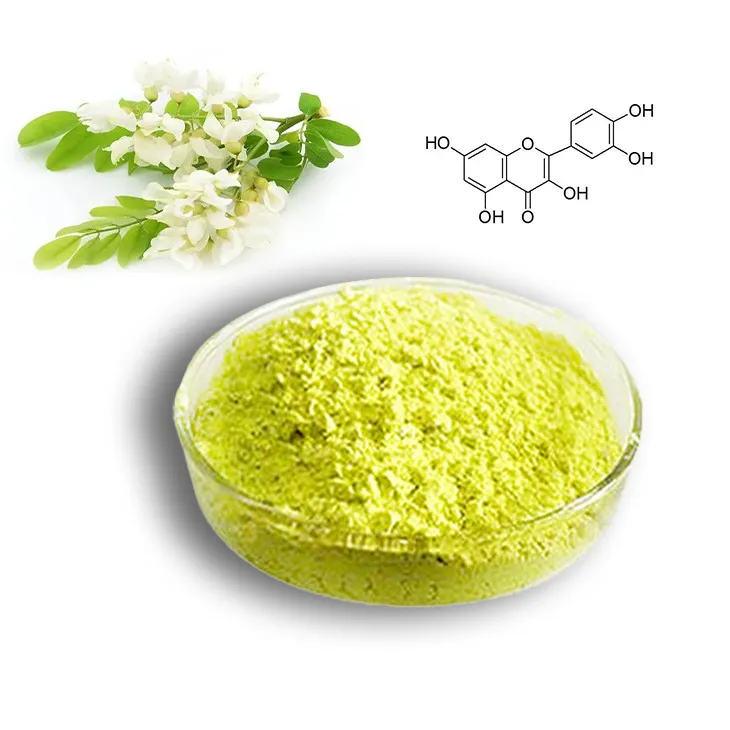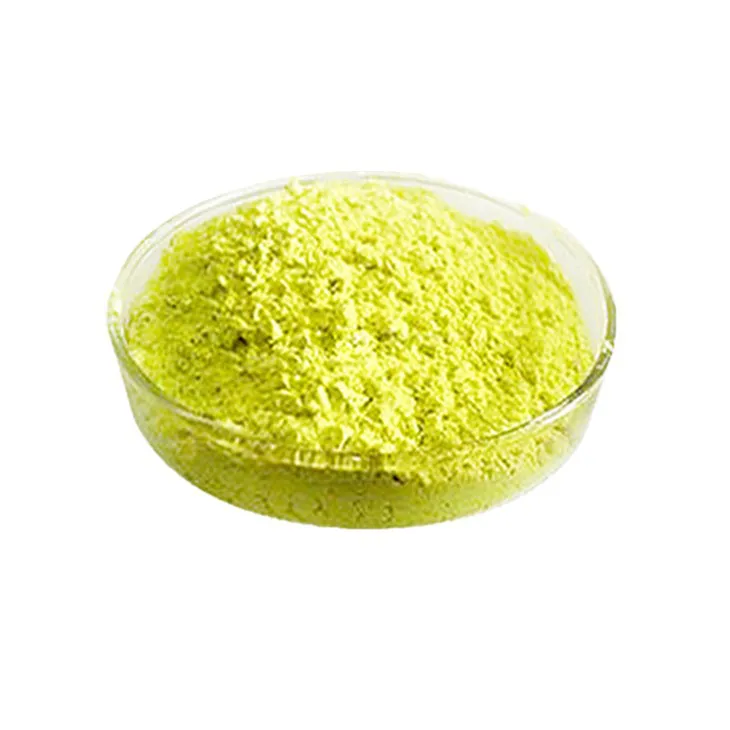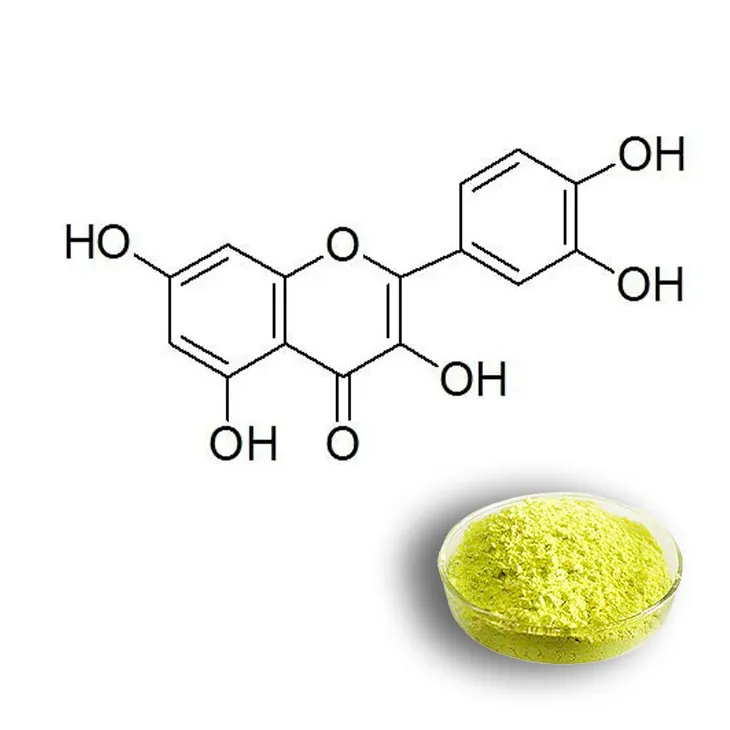- 0086-571-85302990
- sales@greenskybio.com
Optimal Bioavailability of Quercetin.
2024-11-26

1. Introduction to Quercetin
Quercetin is a flavonoid, a type of natural compound that is widely distributed in nature. It can be found in many fruits, vegetables, and grains. For example, it is present in high amounts in apples, onions, and berries. This compound has been the subject of extensive research due to its potential health benefits, which include antioxidant, anti - inflammatory, and anti - cancer properties.

2. Understanding Bioavailability
Bioavailability refers to the proportion of a substance that enters the circulation and is available at the site of action. In the case of Quercetin, its bioavailability is crucial for realizing its health - promoting effects. A substance may be present in food or supplements, but if it is not absorbed well by the body, it cannot exert its full potential. There are several factors that can influence the bioavailability of quercetin.

3. Forms of Quercetin and Their Bioavailability
3.1 Quercetin Aglycone
The aglycone form of quercetin is the most basic form. It has been shown to have relatively high bioavailability compared to other forms. This is because it can be more easily absorbed by the intestinal cells. However, in nature, quercetin is often found in glycosylated forms, which need to be converted to the aglycone form before absorption.
3.2 Quercetin Glycosides
Quercetin glycosides are the most common forms of quercetin in plants. They are less bioavailable than the aglycone form because the sugar moieties attached to the quercetin molecule need to be removed before absorption. This process is carried out by enzymes in the intestine. Different types of glycosides may have different bioavailabilities depending on the type of sugar attached.
- For example, quercetin - 3 - glucoside is one of the most studied glycosides. Its bioavailability may be affected by factors such as the presence of other substances in the diet that can interact with the enzymes involved in its conversion.
- Quercetin - 4' - glucoside may have different absorption characteristics compared to quercetin - 3 - glucoside. The structure of the glycoside can influence how it is processed by the body.

4. Delivery Methods and Bioavailability
4.1 Dietary Sources
When quercetin is consumed through dietary sources, its bioavailability can be influenced by various factors related to the food matrix. For instance, the fiber content in fruits and vegetables can either enhance or reduce quercetin absorption. High - fiber foods may slow down the digestion process, which can affect the release and absorption of quercetin. On the other hand, some components in the food may help in the breakdown of quercetin glycosides to increase its bioavailability.
4.2 Supplements
Quercetin supplements are becoming increasingly popular. The form of the supplement can have a significant impact on bioavailability. Some supplements contain quercetin in its pure aglycone form, which may offer better absorption. However, the manufacturing process and the presence of other additives in the supplement can also play a role. For example, encapsulation of quercetin can protect it from degradation in the stomach and improve its delivery to the intestine where absorption occurs.
- Nano - encapsulated quercetin has been studied as a way to enhance bioavailability. The small size of the nanoparticles can facilitate better penetration through the intestinal mucosa, leading to increased absorption.
- Another approach is the use of liposomal quercetin. Liposomes can mimic the cell membrane structure and help in the delivery of quercetin into the cells, potentially improving its bioavailability.

5. The Body's Physiological Processes and Quercetin Bioavailability
5.1 Absorption in the Intestine
The absorption of quercetin mainly occurs in the small intestine. The first step is the conversion of quercetin glycosides to the aglycone form, which is carried out by enzymes such as lactase - phlorizin hydrolase and β - glucosidase. Once in the aglycone form, quercetin can be absorbed through passive diffusion or active transport mechanisms. The integrity of the intestinal barrier also plays a role. A healthy intestinal barrier can ensure efficient absorption, while a damaged or leaky gut may lead to reduced bioavailability.
5.2 Metabolism in the Liver
After absorption, quercetin is transported to the liver where it undergoes further metabolism. In the liver, quercetin can be conjugated with glucuronic acid, sulfate, or methyl groups. These conjugation reactions can change the properties of quercetin and may affect its bioactivity and bioavailability. For example, the glucuronidated form of quercetin may have different pharmacokinetic properties compared to the original form.
5.3 Excretion and Recycling
Quercetin and its metabolites are eventually excreted from the body. However, some of the metabolites may be recycled and re - absorbed, which can contribute to the overall bioavailability. The balance between excretion and recycling is an important factor in determining how much quercetin is effectively available in the body over time.
6. Strategies to Optimize Quercetin Bioavailability
To optimize the bioavailability of quercetin, several strategies can be considered:
- Choose the right form: Selecting quercetin in its aglycone form or supplements that are designed to enhance the conversion of glycosides to aglycone may be beneficial.
- Consider delivery methods: Opt for supplements with advanced delivery systems such as nano - encapsulation or liposomal formulations.
- Combine with other substances: Some substances like piperine (found in black pepper) have been shown to enhance the bioavailability of quercetin. Combining quercetin with such substances may increase its absorption.
- Optimize diet: Consume quercetin - rich foods in a way that maximizes its absorption. For example, pairing fruits and vegetables high in quercetin with foods that can enhance digestion and absorption.
7. Conclusion
Quercetin has great potential for promoting health, but its bioavailability is a complex issue. Understanding the different forms of quercetin, delivery methods, and the body's physiological processes related to its absorption, metabolism, and excretion is crucial for optimizing its bioavailability. By implementing strategies such as choosing the right form, using appropriate delivery methods, and combining with other substances, it is possible to enhance the effectiveness of quercetin in the body and fully realize its potential health benefits.
FAQ:
1. What are the different forms of quercetin?
Quercetin can exist in various forms. One common form is quercetin aglycone, which is the free form of the compound. There are also quercetin glycosides, where quercetin is bound to a sugar molecule. Different forms may have different solubility and absorption characteristics in the body.
2. How does the delivery method affect quercetin bioavailability?
The delivery method of quercetin is crucial. For example, if quercetin is taken in a supplement form, the type of capsule or tablet can influence its release and subsequent absorption. Some supplements are designed for slow - release, which may affect how quickly and completely the quercetin is made available for absorption. Additionally, if quercetin is consumed in food, the food matrix can either enhance or hinder its bioavailability. For instance, consuming quercetin - rich foods with certain fats may improve absorption compared to consuming it alone.
3. What physiological processes in the body are involved in quercetin absorption?
When quercetin is ingested, it first has to pass through the digestive system. In the stomach and intestines, various enzymes and transporters play a role. For example, some intestinal transporters are responsible for moving quercetin from the lumen of the intestine into the cells lining the intestine. Once inside the cells, quercetin may be further metabolized before being transported into the bloodstream. Liver metabolism also affects the bioavailability of quercetin as it can be modified and excreted or recirculated in different forms.
4. Can diet alone ensure optimal quercetin bioavailability?
Diet alone may not always ensure optimal quercetin bioavailability. While consuming quercetin - rich foods like onions, apples, and berries is a good start, the bioavailability from food sources can be variable. Factors such as food processing, cooking methods, and the presence of other substances in the diet can affect how much quercetin is actually absorbed. Supplements may be considered in some cases to achieve more consistent and potentially higher bioavailability, but they also need to be carefully selected and used.
5. Are there any factors that can reduce quercetin bioavailability?
Yes, there are several factors that can reduce quercetin bioavailability. High - fiber diets can sometimes bind to quercetin and prevent its absorption. Also, certain medications or medical conditions that affect the digestive or absorptive functions of the body can reduce the amount of quercetin that is effectively absorbed. For example, some gastrointestinal disorders may disrupt the normal processes involved in quercetin absorption.
Related literature
- Bioavailability of Quercetin and Its Metabolites"
- "Enhancing Quercetin Bioavailability: Current Strategies and Future Perspectives"
- "Quercetin Absorption and Metabolism: A Review of the Factors Affecting Bioavailability"
- ▶ Hesperidin
- ▶ citrus bioflavonoids
- ▶ plant extract
- ▶ lycopene
- ▶ Diosmin
- ▶ Grape seed extract
- ▶ Sea buckthorn Juice Powder
- ▶ Beetroot powder
- ▶ Hops Extract
- ▶ Artichoke Extract
- ▶ Reishi mushroom extract
- ▶ Astaxanthin
- ▶ Green Tea Extract
- ▶ Curcumin Extract
- ▶ Horse Chestnut Extract
- ▶ Other Problems
- ▶ Boswellia Serrata Extract
- ▶ Resveratrol Extract
- ▶ Marigold Extract
- ▶ Grape Leaf Extract
- ▶ blog3
- ▶ blog4
-
Chinese Withania somnifera Extract Factory.
2024-11-26
-
中国松树皮提取物粉粉末供应商
2024-11-26
-
High - quality Marigold Extract Products.
2024-11-26
-
100% Pure Natural Mango - Flavored Powder.
2024-11-26
-
Quercetin
2024-11-26
-
White Willow Bark Extract
2024-11-26
-
Polygonum multiflorum extract
2024-11-26
-
Licorice Root Extract Powder
2024-11-26
-
Green Tea Extract
2024-11-26
-
Ginger Extract
2024-11-26
-
Bamboo Leaf extract
2024-11-26
-
Berberis aristata Extract
2024-11-26
-
Boswellia Serrata Extract
2024-11-26
-
Aguaje Extract
2024-11-26




















